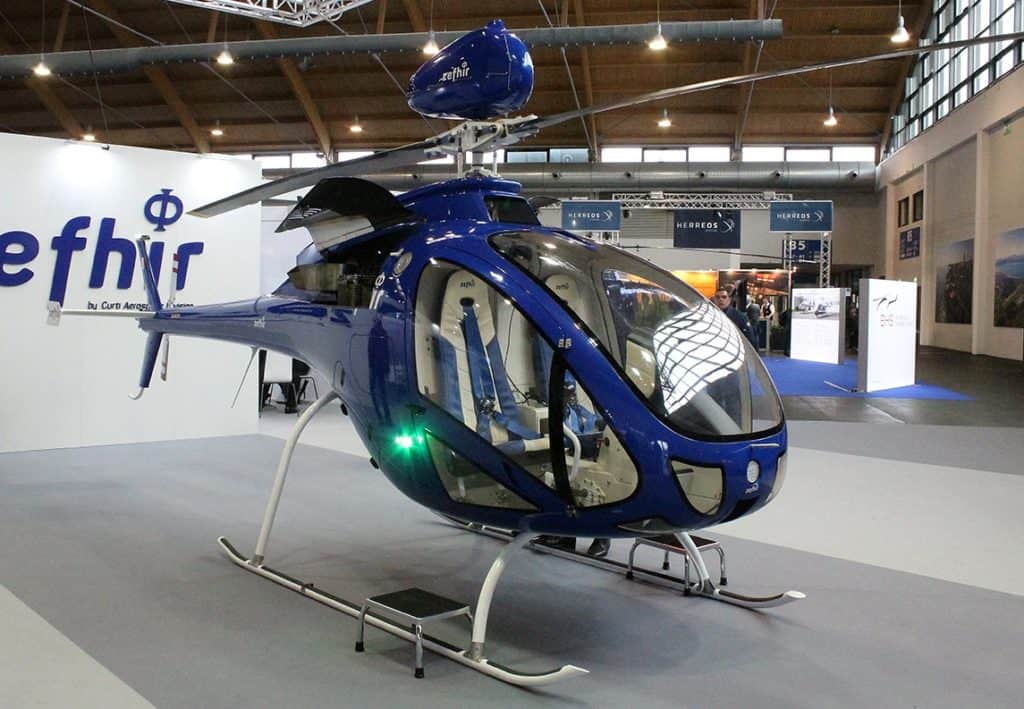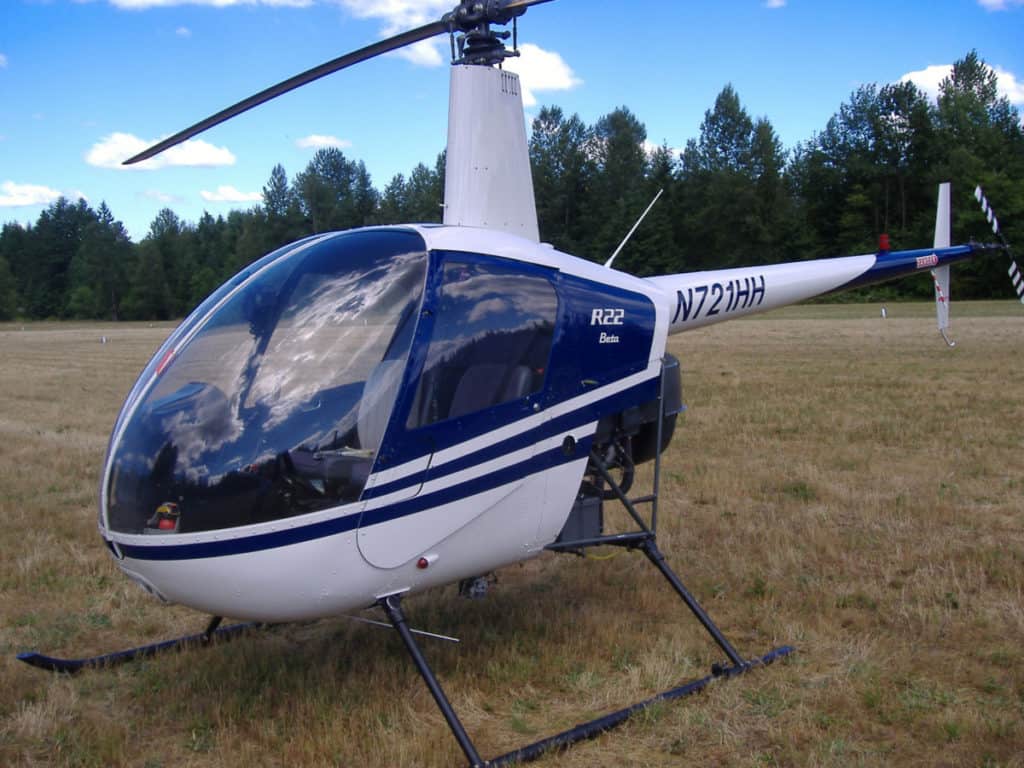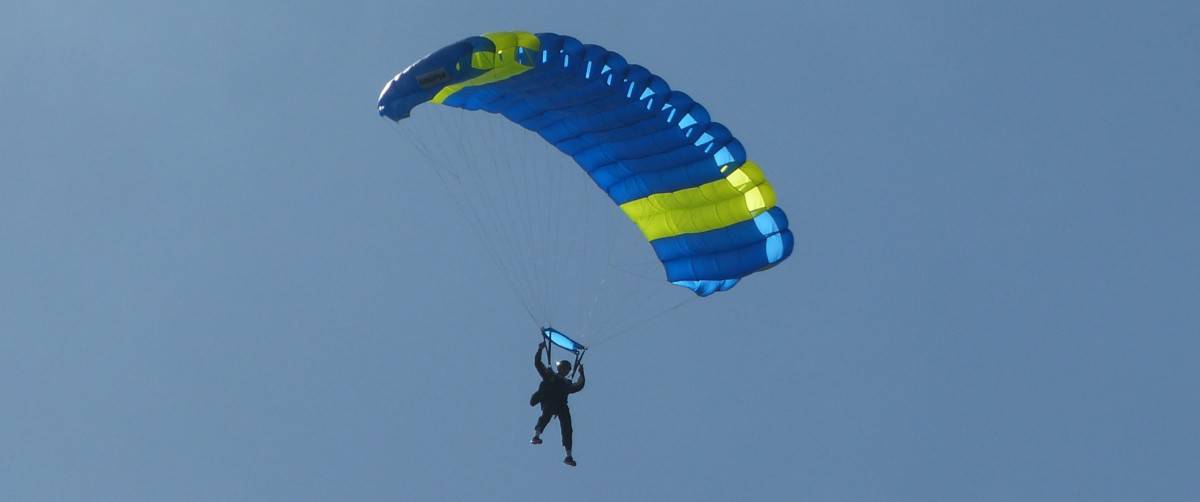
Last night I was sat re-watching James Bond’s GoldenEye movie and the part came on where Bond and his lady are locked into the cockpit of a Tiger Helicopter with seconds to live before the two inbound missiles hit.
You know how the story goes – James lives and goes on fighting, but in the movie, the helicopter had an ejection and parachute system. So is this real? Do Helicopters have parachutes? Do helicopter pilots wear parachutes?
Helicopter pilots do not wear parachutes but there are a few helicopters with parachute rescue systems. For a pilot to evacuate safely they would have to miss the main rotor blades and the helicopter be at a sufficient height to allow for parachute deployment. Ejection systems are heavy & expensive.
But what about test pilots? Surely they must take parachutes with them when they are trying to push the helicopter beyond its limits during initial test flights of a new airframe?
Parachutes in Everyday Helicopters?
As a helicopter pilot, I can confirm that we do not wear parachutes when we fly. Why? Well, the first reason is that the main rotor above our head is our parachute. In the event of an engine failure or complete loss of power, we can use the main rotor to glide safely back to the ground. This is called autorotation (more on this later).
The second reason is that most of the time we are flying between several hundred and a thousand feet above the ground. This would not leave enough time to slow the main rotor, safely exit the aircraft, get the parachute deployed, and make a safe landing. I know base jumpers can do this, but they do not have a blender 5 feet from their head that they first have to deal with before jumping.
The third reason is my passengers. I’m pretty sure they would not be too happy if their pilot just jumped out and left them in a plummeting helicopter! If the pilot had a parachute, then all the passengers would need one to, then try getting everyone out in one go safely – Very little chances of success, especially without in-depth training.
Learn More…
Try These Articles:
* Helicopters: Loops, Rolls & Upside Down – Can They All Do It?
* How Do Helicopters Create Lift? – A Helo Pilot Explains
Parachutes During Helicopter Test Flights?
There are several times I have come across helicopter pilots wearing a parachute. One of them is usually during initial airframe flight tests when the manufacturer’s test pilots have to fly and violently move the controls to their limits to ensure the airframe can take the mechanical and aerodynamic stresses.
When I was very early in my flying career I had to attend the Robinson Helicopters Safety Course as part of being eligible to be a flying instructor. During lunch one day, several of us were sat talking with one of the company’s long-time test pilots. One of the stories he told was of the certification process of the Robinson R22.

Because the rotorhead on the R22 is susceptible to Mast Bumping, the company needed to see if the rotorhead could survive the wrong inputs being made by a pilot.
To do this the test pilot took a prototype R22 up to 10,000ft and placed the helicopter into a Low-G situation then violently moved the cyclic, just like a panicked pilot may do. Let’s just say, the helicopter experienced Mast Bumping and the entire rotor head sheared and departed the helicopter, the test pilot unbuckled, exited the plummeting fuselage, and safely parachuted back to earth!
Well, you can imagine how many of our jaws were resting on the table by this point! The crazy thing is he went back up and did it again to test control functions that should be made by the pilot!
Two words = Big Kahunas!
The first recorded event of pilots successfully parachuting from a helicopter was back in the 1930’s while John Wheatley and his colleague were flight testing a Pitcairn Autogyro. Ever since then, test pilots may elect to take a parachute when they are operating the aircraft at an altitude that gives them the opportunity to make a safe exit and parachute back to earth safely.
But generally, this is the only time a helicopter pilot will wear a parachute.
What is Autorotation?
The main reason why helicopter pilots do not need a parachute is because of an important flight procedure that allows the pilot to safely land an unpowered helicopter. Providing there is no catastrophic malfunction and the helicopter remains under the pilot’s full control then an Autorotation is the pilot’s parachute.
Autorotation is a maneuver performed by a pilot when a helicopter loses engine power. The descending aircraft creates an upward flow of air that is used to keep the main rotor blades turning. Just before touchdown, the energy stored in the rotor system is used to decelerate & cushion the landing.

Join My Newsletter & Get Great Tips, Information and Experiences To Help You Become a Superb Pilot!
When the helicopter loses power the main rotor is allowed to rotate by itself because a device called a ‘Freewheeling Unit’ disconnects the main and tail rotors from the engine. This is like a one-way bearing.
Think of your bicycle. When you pedal it turns the back wheel and propels you. When you go down a hill and stop pedaling the bicycle freewheels. This is the same principle in a helicopter.
When the helicopter enters autorotation, the upflowing air from the descending helicopter keeps the main rotor turning. This store’s rotational energy in the rotor blades themselves.
As the helicopter approaches the ground (50ft – 200ft depending on the helicopter) the pilot begins a gentle flare to remove the forward airspeed. Once the helicopter is at a slow forward speed the pilot levels the helicopter and uses that stored energy to gently cushion the touchdown and make a safe landing – Proving there is a safe spot to land within the gliding distance of the helicopter of course!
Do Helicopters Have Parachutes?
In recent years several companies have dabbled with the idea of fitting a recovery parachute system to the entire helicopter.
The Zefhir helicopter from Curti is the only production helicopter that contains a parachute recovery system. This two-seat helicopter contains a pilot-operated, ballistically deployed parachute from a storage pod mounted on top of the main rotor system to allow for a slow descent to the ground.
This provides a secondary means of safe landing if an autorotation is unable to be completed.

At this time the helicopter parachute recovery system is only on 2-seat helicopters as the size and complexity of adding such a system to large helicopters will be expensive, technically challenging, increased weight, and increased drag.
The commercial requirement for such a system is not strong enough for helicopter manufacturers to delve deep into R&D of this type of system.
For more information, you can visit the Zefhir website HERE
Learn More…
Try These Articles:
* Can Helicopters Fly at Night? A Pilot Tells All!
* Helicopters: Can They Fly Across an Ocean?
Do Helicopters Have Ejection Seats?
The final part of the parachute puzzle! Fast jets have ejection seats but can a helicopter have them? Obviously, the main problem here is if an ejection seat fires, the pilot has to make it through the blender above their head!
At this time there is only one helicopter in production with a pilot ejection system – KA-52 ‘Alligator’ from Russian Helicopters. When activated, explosive bolts shed the main rotor blades from the hub, and then rockets fire to launch the two pilot seats clear of the helicopter.
Here you can see a video of how the ejection system works:
For more information on both the helicopter and the ejection seat systems please check out their websites:
Russian Helicopters KA-52 ‘Alligator’ Website
К-37-800М Helicopter Ejection Seat Website
To Finish
Although there are a few parachute systems available for helicopters and their occupants, the technology is not advanced enough, cheap enough, and light enough to make it a commercially viable product.
The use of parachutes for test pilots can be a welcomed addition but these are highly-trained pilots that will use the parachute only as a last resort when they know all other means of safety have been expelled.
As a helicopter pilot, keeping suitable landing zones at the forefront of my mind is something that we have been trained to do since flight school. There is not always a suitable landing site available and that is just a risk involved with the job but even if we all carried parachutes we would have not time to exit and land safely at the altitudes the majority of us work at.


